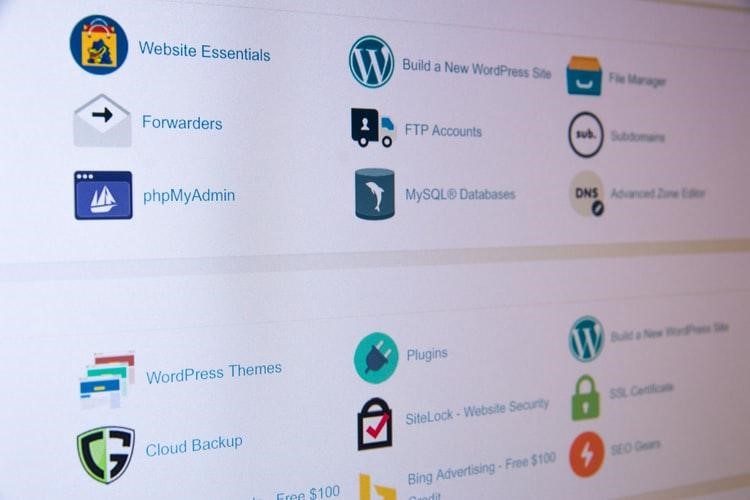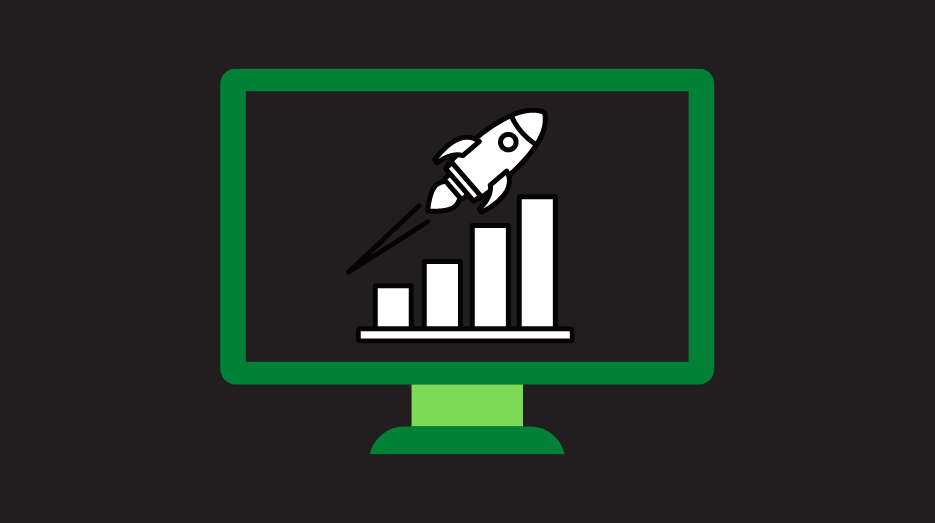A recent survey has found that one-third of small businesses in America do not have a website. The survey, conducted by Visual Objects, a portfolio website that showcases creative work from top firms around the world, has revealed that 28% of small businesses are operating without a website. Of this 28%, a majority cited that launching a website within budget seems impossible and is their main reason not to invest in a website. Another big reason? Feeling technically overwhelmed. Through this post, I’ll try to address both these issues. I will list resources and helpful material that will make the process of creating and setting up your business website an easy affair. All the sources I’ll list here are either free or easy on the pocket, so you don’t have to worry about your budget. A note of disclaimer, though: when it comes to business and marketing, you get what you pay for. So, while all these resources are great to start and set up, most of them are quite limited in what they have to offer when you start growing. So, as you grow and succeed, put a budget aside for upgrading to a premium version of these resources so your success isn’t stalled. Note of disclaimer out of the way, let’s see what we’ve got…

1. Have A Launch Plan Ready
Long before you start thinking of web hosting or design, you need to have a launch plan ready for your website. A launch plan is a specific list of tasks that you need to perform on (or before) the day of your launch to achieve some specific sets of goals. These goals could be: ● Get lots of website traffic ● Have people subscribe to your email list ● Have visitors engage on your website: leave comments, share web pages, ask questions ● And lots more. Your launch plan will give you an idea of what and how your website needs to look and feel to make sure that it is attractive to your target audience. It will give you a particular date on which to launch your website to the public. It will keep things on track and with a ‘Coming Soon!’ teaser page, you can tell your audience that you’ve got something interesting brewing, and they should expect something great on the launch day. (Be sure to fulfill these expectations on your launch day with a well-designed website that provides something of great value to your users. But more on that later in the article.) As you’ll be noting down your aims and goals on your launch plan, it’ll help you keep things on the lean side and will ensure you don’t get involved into themes and packages that are out of your budget, and quite unnecessary in the initial stages.
2. Choose a Domain Name & Hosting

First, the domain name:
In simple terms, it is the name of your business followed by a .com on the URL. For instance, if your business name is Free Web Resources, your ideal domain name would be freewebresources.com. There are several domain name registrars online that let you buy the domain name of your choice (if it’s available) at an affordable rate. GoDaddy, 101domain, and Namecheap are just a few of those. Most domain registrars allow buying your domain for as little as under $10. However, the exact rates would depend on the domain name’s availability and demand.Next is hosting:
It is probably the most important aspect of the website setup. It provides a space for your website to live on, helps with web speed and safety, and ensures it doesn’t crash. Watch out though: there are different types of web hosting and it's easy to get confused when you're a newbie. A host is a computer that saves all the files of your website like your personal computer saves the file you’ve created or put there. Unlike your personal computer, however, the host will let anyone access your website files just by clicking (or typing in) your domain name, thanks to the Internet. Now, web hosting is of many kinds: shared, dedicated, various mish-mashes of the two. In the initial stages of your web building, we recommend using a shared or managed hosting service which will cost less, but also provide you the much-needed technical support that you’ll badly need if you aren’t a tech person yourself. There are tons of hosting platforms that offer hosting+domain package options. At a discounted price, you can get your domain name registered as well as get an attractive hosting service. Companies like Blue Host, Host Gator, and Dream Host, etc. are a few of the names that offer such packages. At Blue Host, for example, you can create and set up your company website in as little as $2.95/month with a 30-day money-back guarantee. Plus, Blue Host comes highly recommended by the giant of content management systems, WordPress, so there’s that. With the domain name and hosting sorted, we move on to…3. Choose a Content Management System

A content management system (CMS) does what it sounds like it does: it manages your website content. This content includes your text-based posts, your videos, podcasts, images, and everything else you’ve stored on your website. WordPress.org, Joomla, and Drupal are the top 3 CMSs currently available in the market. Of all three, WordPress takes the cake for not only being the most affordable and the easiest to set up, but it is also the most intuitive platform available. If you know how to use MS Office or MS Excel in your daily routine, running a website on WordPress is going to be pretty much like that. The admin panel is easy to understand. Adding/editing/deleting website pages is a breeze, and so is adding/editing/deleting posts. Joomla and Drupal are also convenient, but for a beginner, we recommend you stick to WordPress. It helps you create a website that is an information-rich source and not just an ad or a digital presence for your business. After all, CNN, eBay, and loads of other websites run on WordPress. The best thing about WordPress CMS is that it’s free, open source, and has headless CMS capabilities. However, depending on the website themes and plug-ins you install, etc. it can cost you somewhere around $11-$40/month with a one-off cost of $200 for security and developer charges. Compared to more tech-savvy CMSs, however, these costs are a bargain.

4. Design Your Website
Website design is responsible for how your website looks and feels to the user. An astounding number of <75% of people who visit a site cited the website’s design as the factor on which they decide about the company’s credibility. With so much at stake, it is vital to make sure that you get the design of your website right. Once you’ve chosen your CMS, you’ll need to choose themes (templates) that will give a certain ‘look’ to your site. Make sure that your website’s look and your brand’s character and feel are in harmony. Anything off balance and you run the risk of appearing a fluke to your online audience. But get it right, and consider your online branding off to a great start. ● Themes: WordPress offers tons of free (as well as paid) themes that you can choose to design and decorate your website. After you select a theme, you can alter it to tailor it more to your liking and brand guidelines. Always choose website themes in colors, fonts, and styles that are closer to your brand. All new WordPress themes are mobile-responsive. It means that they’ll allow your website pages (and their content) to optimize themselves when opened on mobile devices. ● Website Images: Apart from themes, the images that you’ll use on your website must also be of high-quality. These could be original images taken by you showing behind-the-scenes footage, product pictures, and similar, or could be stock photography from the websites like: ● Pexels.com ● Unsplash.com ● Pixabay.com Images from these stock websites are always high-quality and free. You only need to use these images with due credit and not pay anything towards the costs. ● Plug-ins: Themes and images sorted, it is plug-ins next. A plug-in is an additional piece of software that helps give more character and meat to your website. Do you need a contact form for your website? Install a plug-in. Want live support featured? There’s a plug-in for that. Want a more powerful SEO than what WordPress provides in its package? Yes, install a plug-in. However, when choosing and installing plug-ins, only use those are regularly updated by their developers. So, you don’t become a victim of the website crashing or something much worse (hacking, for example). Also, keep in mind that the more plug-ins you install, the heavier your site will become. It may take longer to load, and speed is always a priority when it comes to SEO. So balance the aesthetics and technical strengths when you are in this step of your web building journey. With a well-designed website, you can communicate a lot of information about your brand, what it does, the niche problem it solves, and so much more.
5. Keep Your Web Content Ready
Saving money on your first business website can happen in many ways. One of those ways is to launch a fully ready and information-rich website that provides something of value to most of its audience on all of its pages. It will direct loads of traffic to your website that will engage with it, may subscribe to your email list, and ultimately help in your lead/revenue generation. To achieve this feat, you need to get your website’s content prepped and ready way before its actual launch day. We recommend having 3-4 highly valuable pieces of content, ready to publish on your first day. One of those pieces could be something that can go viral, something that people find of value and interest that they feel happy to share with others online. Another content piece can be an expert piece. You can get in touch with the experts in your field and interview them on a niche topic that people are curious about. Your expert piece can aim to explain those niche topics and emerge as an authority on the subject. While talking about content, keep in mind that not all content will be text-based. To present a dynamic website, you need to have a variety of content types on it. It could include useful videos, charts, infographics, and more. To find more information on how your website’s content plays a role in your site’s success, you can check out this useful piece. You need to know how to curate your website’s content so that it matches perfectly with what people are searching on the Internet.





